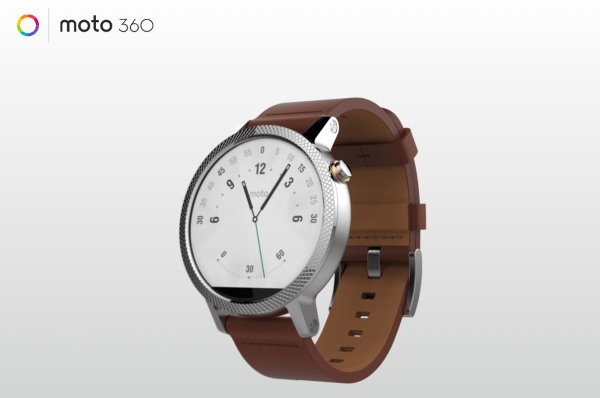Motorola defends its decision not to make the Moto 360 screen entirely round

The traditional shape of a watch face is round. There are variations, of course -- square, rectangular, and so on -- but for the most part, round is a safe bet. With the Moto 360, however, Motorola raised a few eyebrows when its screen was launched with a design that has become known as the 'flat tire' look.
Yesterday, the company unveiled the new version of the Moto 360 and the same flat tire, non-round screen is present. What gives? Despite disappointment, and even ridicule from users, Motorola remains adamant that it made the right choice, standing by its decision to keep the flat tire in the second generation of the smartwatch. So, is it ugly, or does it make sense?
Take a look at the Motorola website, and you'll notice that a very large proportion of the photos of the Moto 360 show black watch faces. This goes some way to disguise the unsightly slither of the visage that is not made up of pixels -- but not far enough. Why would a company make the conscious decision to implement a design that is unattractive, and viewed by many as inferior to the competition?
Speaking to AndroidPIT, Motorola's product management lead Kouji Kodera said:
It is possible to do round ones, like the competition is doing, but things will stick out [...] The design and the form factor are very important. This shape and design also allow us to provide possibilities for giving choice on different colors, different materials and different bezel designs. We thought that was more important than this tiny black slit at the bottom.
The 'tiny black slit' is home to, among other things, the ambient light sensor. Motorola insists that customer feedback showed that people placed great value on having more customization options to choose from -- different sizes, different colors, and so on -- and the company therefore chose to focus on delivering in these areas.
Kodera admitted that some work had been done to develop a version of the Moto 360 with a completely round screen but said that "the value added by going this direction outweighed the alternative". With other manufacturers having been able to overcome the problem fairly easily, it can only be assumed that Motorola either couldn't come up with a way of producing a round screen, couldn't do it cheaply enough, or did not want to invest the time and money to conduct the research.
Was it a mistake?
